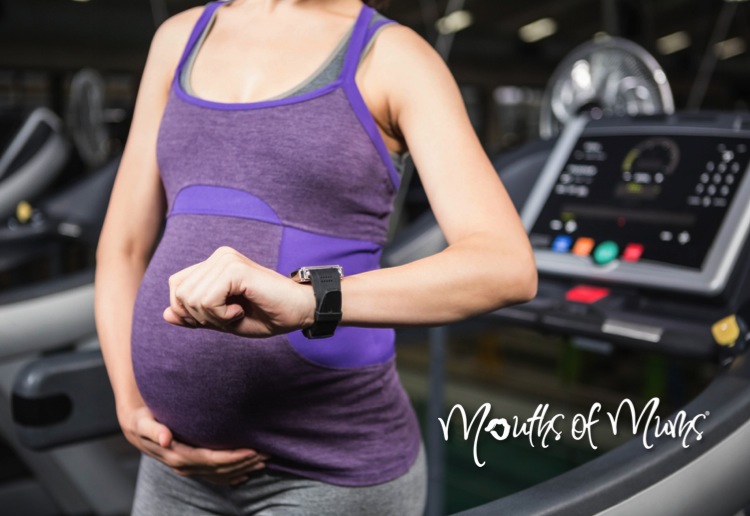Exercising during pregnancy has many positive health benefits. From preparing you for labour and childbirth, keeping you healthy and boosting those everyday spirits, having exercise as part of your routine is a good idea.
But there are a few important considerations to keep you and your baby safe. Before you start any exercise it’s a good idea to consult your doctor first. Whilst exercising during pregnancy is safe, there can be some cases it’s not ok. Pregnancy isn’t a time to push your body to the max – but with a few gentle exercises to get your heart rate up and shifting your focus from weight loss to the general health benefits, you can certainly reap the rewards.
Here’s what to look out for:
1. Know what exercises to avoid
The general rule of thumb when it comes to exercising whilst pregnant is that if you were physically active before, it’s generally safe to continue. That being said – it’s strongly advised to not try anything new. If you were a light jogger before falling pregnant, keep it up. Running is safe, but if you have never been a runner before, don’t use pregnancy as a time to ‘try it out’. Stick to your normal routine, just tone it down a notch based on how you’re feeling.
Avoid any contact sports as well as exercises that may throw you off balance, such as bike riding (it’s best to stick to stationary bikes). Stay clear of anything that can cause trauma to the abdominal area, exercise that utilise rapid changes in direction or jarring motions. Bouncing whilst stretching should be avoided, as should excessive jumping or skipping, waist twisting movements whilst standing and intense bursts of exercise. Instead opt for safe options like swimming, walking, running, aerobics classes, yoga, stretching and slow controlled weight training.
2. Work out at home
Many pregnant mums-to-be feel more comfortable working out at home. The benefits of this is practicality; but it also offers you the opportunity to really go at your own pace without worrying about other people needing to use the machines. If you haven’t already, investing in a quality treadmill, cross trainer or bike can be ideal for the home – before, during and after pregnancy!
When you are working out at home, make sure you wear the right clothing. Loose-fitting, breathable exercise wear is important to ensure you don’t overheat and opt for a maternity bra with the right support. Increase your pre-warm up too, as your muscles, joints and ligaments are liable to stretch more when pregnant resulting in more injuries.
3. Consume extra calories and water
Upping your calorie and water intake whilst pregnant and exercising is vital – you’re eating/drinking for two now remember! And you’ll burn a lot more calories quicker too. As exercise helps to burn calories, eating well and nourishing you and your baby’s body is priority. You should speak to your doctor about what weight is healthy for you and adjust the calories accordingly.
Drink plenty of H20 to stay hydrated before, during and after exercising. A big problem with pregnant women exercising is the tendency to overheat and maintain control over body temperature, so upping your fluid intake will help. Avoid working out in extreme heat too – especially in the first trimester. Overheating in temperatures higher than 30 degrees can cause problems with the developing baby, so don’t overdo it.
4. Focus on strengthening your tummy
There are a lot of changes happening with your tummy whilst going through pregnancy. Keeping your core abdominals strong well be a positive aid for labour, delivery and recovery after your newborn arrives. Pelvic floor exercises are great for strengthening the muscles around the pelvic floor area. It’s these layers of muscles you want to focus on as they act as a supportive hammock for carrying your baby (from the public bone to the end of the backbone). Be careful not to do any stomach crunches or exercises that involve lying your back in the first trimester
5. Listen to your body
Every person reacts to pregnancy different. And just because you’ve had a baby before, it doesn’t mean what worked for you then will work again this time around. Whatever type of exercises you choose to be involved in, the biggest key to an effective and safe workout is to listen to your body.
Dizziness is a common problem with pregnant ladies and exercising can lead to losing your balance, especially in the last trimester. Your energy levels will fluctuate day to day and breathing can get harder. If your body has had enough – you will notice signs like fatigue, pain in back and pelvis, heart pounding in your chest, shortness of breath and dizziness. If you experience any of these symptoms; stop and recoup!
Do you have any other helpful tips to add? Please comment below.
Image courtesy of Shutterstock.com






















-

-
-
meedee said
- 31 May 2021
Reply
-

-
-
ella12 said
- 24 Aug 2016
-

-
-
mom81879 said
- 07 May 2016
-

-
-
jodiev1980 said
- 14 Apr 2016
-

-
-
mom101628 said
- 13 Apr 2016
-

-
-
curlytops said
- 05 Apr 2016
Post a comment10:33 am
3:52 pm
9:25 am
3:26 pm
11:22 pm
-

-
-
mom134803 replied
- 14 Apr 2016 , 3:32 am

Reply9:48 pm
To post a review/comment please join us or login so we can allocate your points.